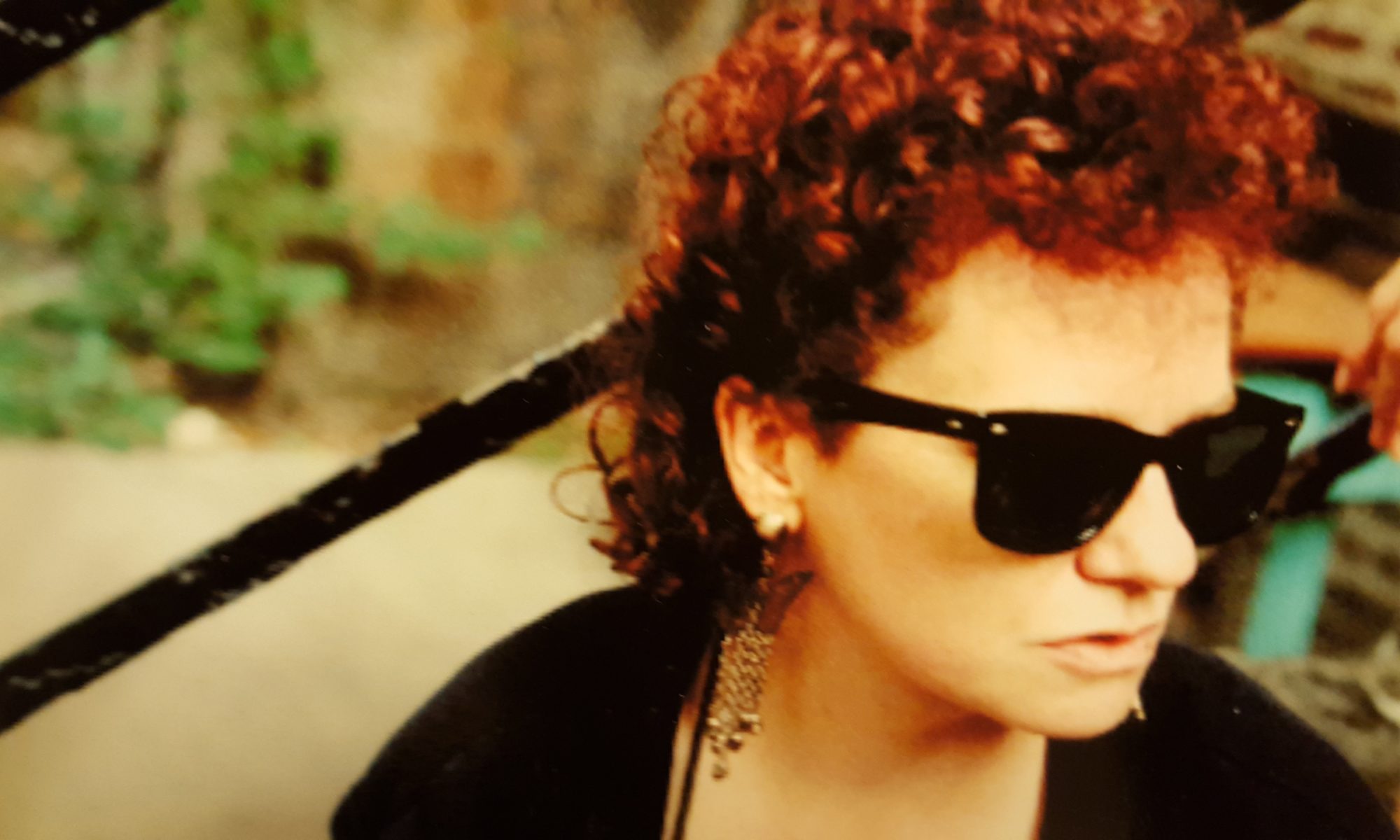In the beginning of the 1970s, when I was in my twenties, I took a ride share from Wisconsin to LA, then hitch-hiked up Highway 1, to begin a new chapter of my life in Berkeley, California. For reasons, unknown to me—a young woman looking to find my way in the world—I’d studied literature at UW Madison, got involved with independent films, but sunk my heart into weaving. I went to Berkeley to study with a weaver and, after a couple years I rented a space in a warehouse on Adeline and Shattuck Avenue. This studio was big enough to hold several looms, including an upright loom that was about eight feet wide and ten feet high, built by a carpenter friend. Once I strung the warp, I took soft, fuzzy balls of wool and, unspooling them onto a shuttle, wove them through the warp, forcefully tamping them down, pounding on the newly laid in weft with a pick. These six pictures show that process and the seventh shows the final tapestry.
I have only two of the weavings from that time left. They hang in our apartment in NYC. Their photos are the last two below. But what happened to the rest? Well, I’m not sure. Some are with friends—some of whom I no longer have a clue about their whereabouts—some went to galleries I lost touch with, others got lost or tossed out in the intervening forty years. They’re big, usually at least five feet high or wide, and they are heavy and hard to hang. A couple weeks ago I decided I must have taken photos of those weavings. So began my archeological dig. As I uncovered the layers, each stratification shuttled me back chronologically through my life.
First, I scrolled though my online digital files and watched the last fifteen years of my New York City life flash by: family—kids, grandkids, great-grandkids, mom, brothers and sisters, friends—in Wisconsin, New Jersey, Brooklyn, Harlem, California; job at Dance Division; trips to Paris, Brazil, Cambodia, Japan; gatherings for birthdays, holidays, anniversaries, deaths. No weavings. Then I pulled out the multiple photo albums from shelves and cabinets. These pictures took me back another twenty years, still in NY: my son coming into my life, grandkids, more trips, more friends, more past, including bands and literary magazines. Everyone grew younger; my hair had color and my husband had hair. Still no weaving pictures. Then Arthur pulled down a plastic bin. Jackpot. I found the late 1960s and 1970s photos, my deepest layer, though not as deep as the albums at my mother’s home with black and whites of my childhood. In the midst of these fading color pictures of my loft in Berkeley and the young selves of my friends and me—including a good number of loved ones who never got the chance to get older—I finally came across the record of my weavings. Slides in albums made to show galleries, slides in boxes.
But there was no time to linger. I got online and ordered a gismo to transfer slides to digital files. Once I digitized them, I saved them to my computer. I looked at them together and stopped. Had I really done all these? Some I didn’t even remember. Others I did remember, but there were no records of them. Looking at the remaining images of my work, I can see a progression that I’m not sure I was even aware of at the time. What comes back to me now is the process of making the works, the hours of planning, weaving, fingers pulling cotton warp out, passing yarn through, then pounding it down, tight. The resulting weavings themselves are merely artifacts. Do they symbolize anything beyond themselves, anything besides form, texture, color, and the time and effort to make them? Or are they like my dead mother’s rosary, though meaningless to non-religious me, it’s not the symbolism of the beads, but their concrete physicality that conjures her.
In 1981, I graduated from San Francisco State University with a Masters in Art, sold everything I could, including my looms, and moved to New York City, carrying one piece of luggage and my electric guitar. I morphed again and joined a punk band. Who was that person in her twenties who made these tapestries? Who was the crazy one running around the East Village, playing in after-hours clubs? Who is this person who is writing this so many years later?
Now, out of the blue, its 2020, we’re in the middle of a pandemic, a global financial crisis, and a Black Lives Matter struggle, renewing the fight for the rights of Black people. While quarantining at home, I have that same vague, lost feeling I had in my early twenties. Back in the 70s and 80s I had no idea where I was headed. Of course, I still have no idea where I’m headed, but now I have the ability to look back, but looking back at myself is disconcerting. Photographs and slides fill in some of the story, but they don’t reveal the self beneath. I can feel the love and friendship and artistry of the time, but not the politics, the wars, the pain and joy, the waitress jobs, the stories. Maybe that’s the point—don’t look back. Or. No, look back in wonder.
For these even later works, still in the 1970s, I took what I thought was bold move and, after making the tapestry slashed it, creating holes and making its surface pucker and undulate.


A couple of arty shots of me by friends Cathy Phoenix and Sian Murray, two intense, creative photographers.

Photo by Cathy Phoenix 
Photo by Cathy Phoenix 
Photo by Cathy Phoenix 
Photo by Cathy Phoenix

Photo by Sian Murray 
Photo by Sian Murray









































